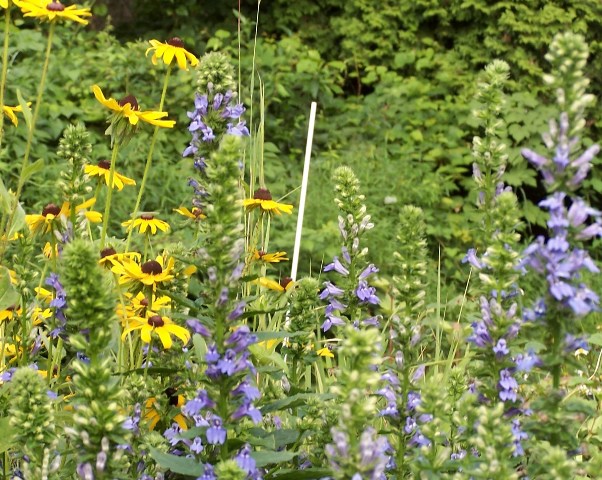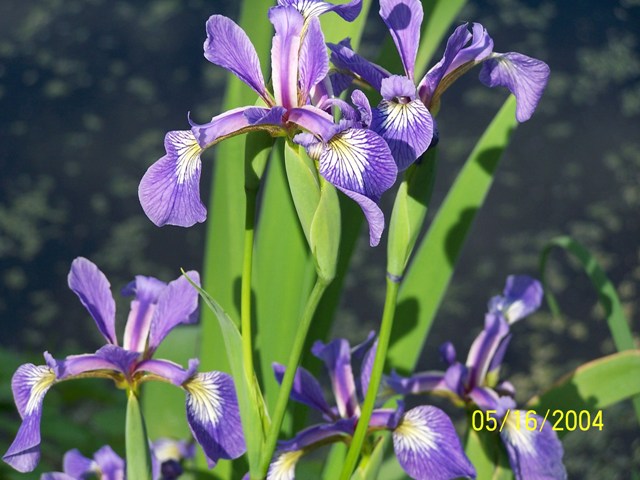Text and photos c. 2009 Yellow Springs Farm LLC
April showers bring May flowers; how comforting and reassuring this is! Despite climate change, suburban sprawl, and economic recession, the flowers are as bright and beautiful as ever. Native flowers are ready for showtime in May, just in time to provide plenty of pollen and nectar to the insects, butterflies, and honeybees.
For aesthetic pleasure, from the human viewpoint, May flowers are especially pleasing in purple and yellow combinations. Of all the complementary color pairs, such as red and green, or orange and blue, the purple and yellow flowers are my favorites. These colors are often associated with royalty and passion, but for me they provide a sense of joyful energy and the spirit of frolic in the garden. I start this color pattern in April with daffodils and blue hyacinths. From there, I reach out to continue this “chroma-pleasure” with native perennials in May, and throughout the summer.
In sunny spots with moist soils, try to plant Iris versicolor (Blue Flag Iris), shown above, with Caltha palustris (Marsh Marigold.) Some years the Marsh Marigolds will finish blooming just as the Iris get started, but with a little luck, the two blooms will overlap in early May. The Marsh Marigold provides a bonus second bloom period in early Fall, too, in many pond gardens.
Zizia aurea (Golden Alexander) and Senecio aureus (Golden Ragwort) are both yellow bloomers in May. The Golden Ragwort fools many by setting buds that seem purple at first, but then open up to show dozens of small ,golden yellow, daisy-like flowers. Amsonia hubrechtii (Bluestar) is a nice mate for these yellow flowers. The Bluestar will be a May favorite, but then offer you warm harvest color in fall foliage. If I have not yet convinced you to try this grouping, you might note that in our Pennsylvania gardens, deer reliably walk right past these species on their way to munching Hostas and other tasty tendrils.
Looking ahead through summer, Liatris spicata (Gayfeather) will pair well with Coreopis tripteris (Tall coreopsis). Lobelia siphilitica (Blue Lobelia) is ready to shine just as the Rudbeckias are also flowering. These are just a few of the combinations possible. Which purple and yellow pairings do you prefer?


